Meeting the Challenge of Obesity.

My thoughts this weekend are with those who were in the path of Hurricane Matthew as it hits the Caribbean and the Southeastern United States. More than 300 people have died as a result of the hurricane in Haiti, and as I write this the hurricane is bearing on Florida. While our thoughts are, as they should be, with those immediately affected by these events, it is also incumbent upon us not to forget the long-tail consequences of disasters, where thousands can be expected to have mental health consequences of these events in months and years to come. I have written on this previously, and we reprint in this week’s SPH This Week a previous Dean’s Note on the topic.
On to today’s note. According to recent data reported by The State of Obesity, obesity rates for adults living in four US states exceeded 35 percent in 2015. The states in question are Louisiana (36.2 percent), Alabama (35.6 percent), Mississippi (35.6 percent), and West Virginia (35.6 percent). They are by no means outliers. Obesity rates have exceeded 30 percent in 25 states and 20 percent in all states (Figure 1).
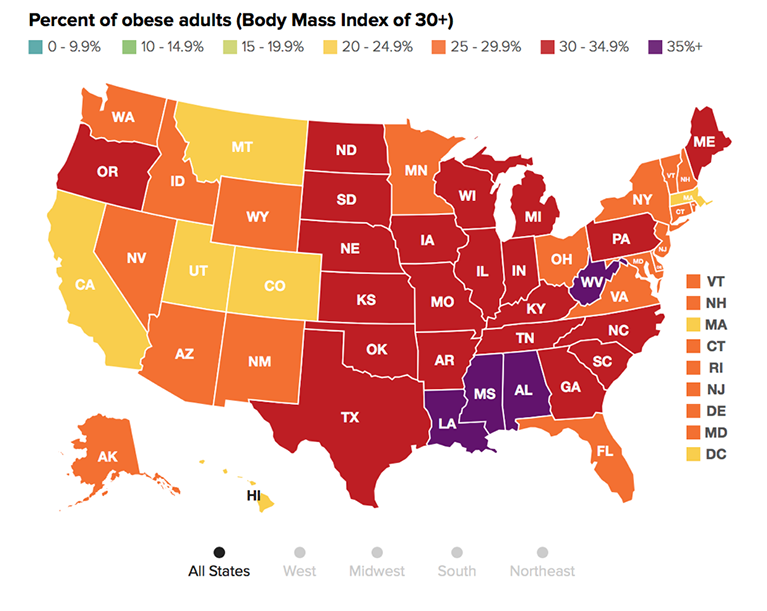
妈
Wh
As these reasons amply suggest, obesity is closely tied to income and the conditions of poverty. In 2011, more than 33 percent of American adults who made under $15,000 per year were obese, compared with 24.6 percent of those who made at least $50,000 per year. In 2007, 27.4 percent of children living below the poverty line were obese, compared with a 10 percent obesity rate among children with family income that exceeded 400 percent of the poverty threshold (Figure 2).
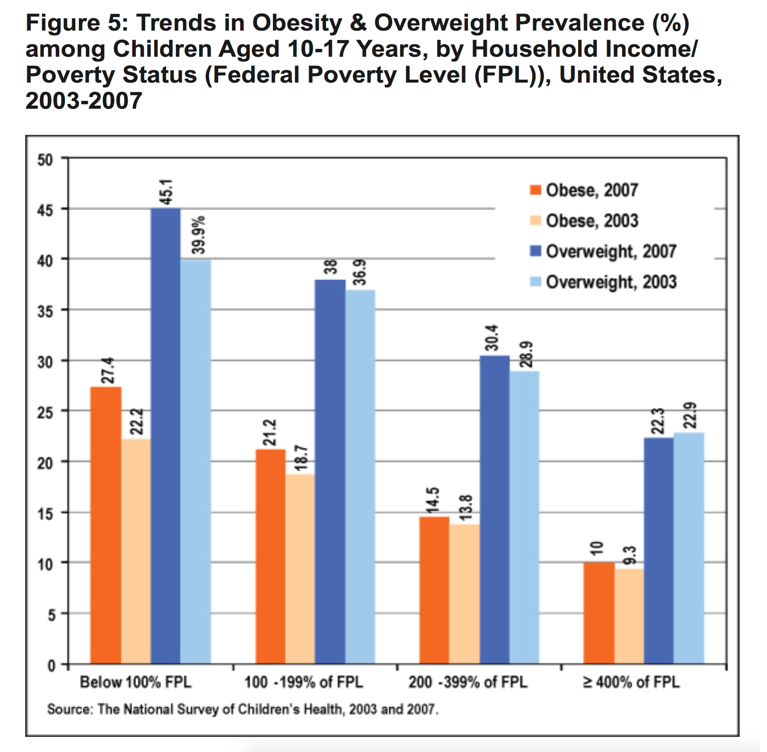
Lack of education, which is inextricably linked to poverty, also exacerbates the problem of obesity among low-resource communities. Obesity rates for adults who did not graduate high school were about 33 percent in 2011, while adults who graduated from college or technical college had an obesity rate of 21.5 percent. Children of parents who had under 12 years of education had an obesity rate of 30.4 percent, 3.1 times higher than the obesity rate of children whose parents received a college degree (9.5 percent). I will write more about the link between income and educational advantage in a future Dean’s Note.
As more Americans become overweight and obese, certain racial groups shoulder a disproportionate burden of this epidemic, driven largely by the higher rate of poverty among these populations. Particularly vulnerable are black and Hispanic/Latino populations, with a poverty rate of 27.4 percent and 26.6 percent, respectively, compared to a 9.9 percent poverty rate for whites. Between 2011 and 2012, compared with an overall obesity rate of 34.9 percent, obesity rates among adults were highest in the black community, at 47.8 percent. Latinos suffered from 42.5 percent obesity, and whites had an obesity rate of 32.6 percent (Figure 3).
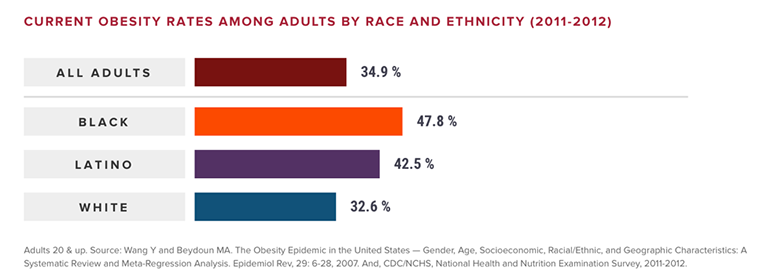
The picture shifts slightly when we factor in rates of overweight among adults. Compared with an overall overweight and obesity rate of 68.5 percent, Latinos suffered the greatest burden at 77.9 percent, followed by blacks at 76.2 percent and whites at 67.2 percent (Figure 4).
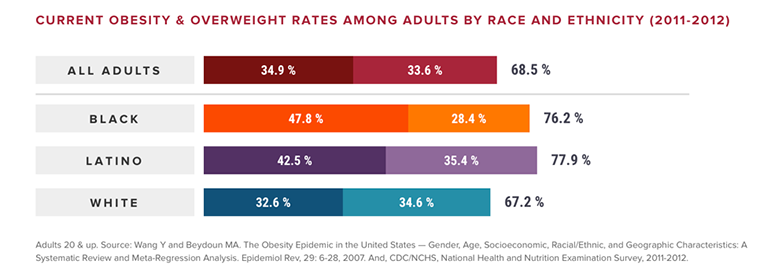
Latinos also had the highest childhood obesity rates. Compared with an overall childhood obesity rate of 16.9 percent, Latino children had a rate of 22.4 percent, black children had a rate of 20.2 percent, and white children had a rate of 14.3 percent (Figure 5).

Adding overweight to the picture, Latinos had a rate of 38.9 percent, blacks had a rate of 32.5 percent, and whites had a rate of 28.5 percent compared to an overall rate of 31.8 percent (Figure 6).
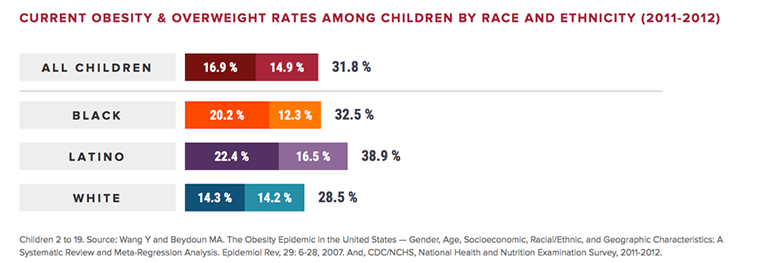
Ob
I hope everyone has a terrific week. Until next week.
Warm regards,
Sandro
Sandro Galea, MD, DrPH
Dean and Robert A. Knox Professor
Boston University School of Public Health
Twitter: @sandrogalea
Acknowledgement: I am grateful to Eric DelGizzo for his contributions to this Dean’s Note.
Previous Dean’s Notes are archived at: /sph/tag/deans-note/
Comments & Discussion
Boston University moderates comments to facilitate an informed, substantive, civil conversation. Abusive, profane, self-promotional, misleading, incoherent or off-topic comments will be rejected. Moderators are staffed during regular business hours (EST) and can only accept comments written in English. Statistics or facts must include a citation or a link to the citation.